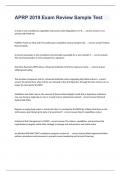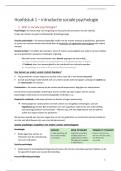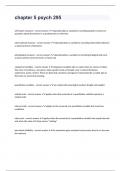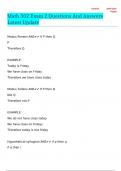Antwoorden
Answers ALL rehearsal questions (GEN + MOB + BIC) BIC20306
- Instelling
- Wageningen University (WUR)
This document contains answers to all rehearsal questions provided on the BlackBoard site of the course BIC20306. Since no answer model was uploaded by the teachers, I decided to upload my own answer model. All rights of the questions go to their rightful owners (the BIC20306 teachers), and no prof...
[Meer zien]














